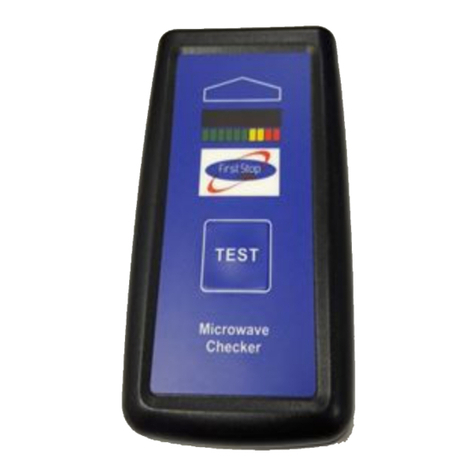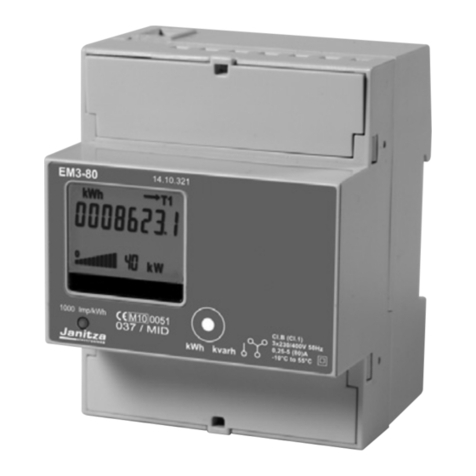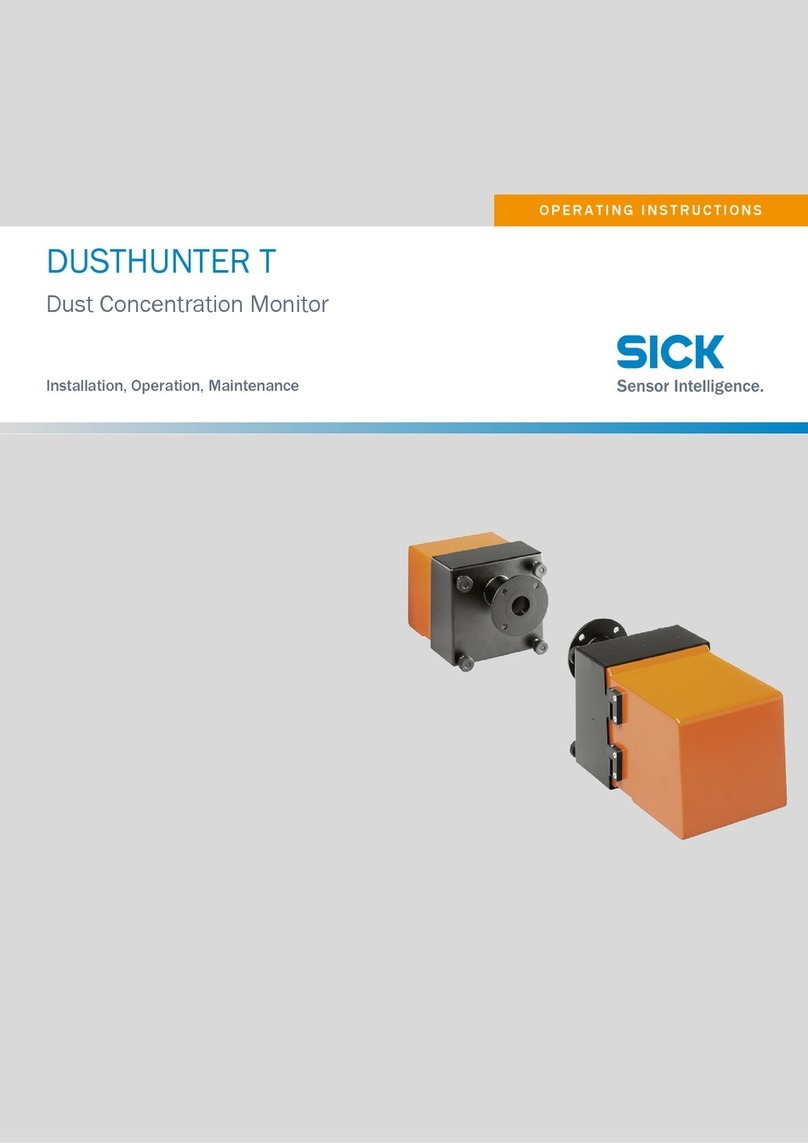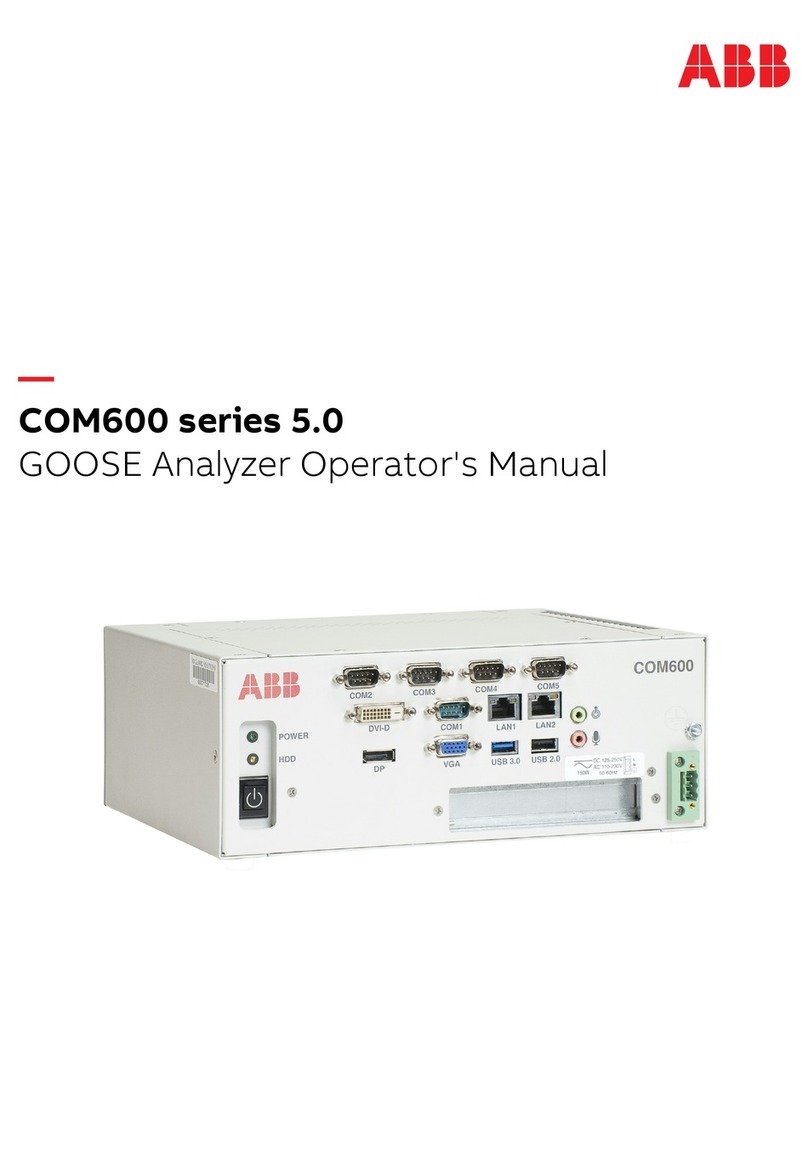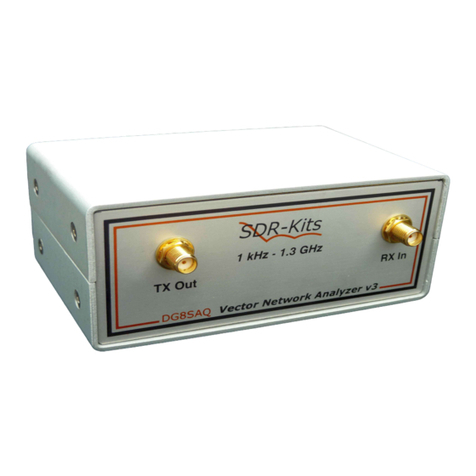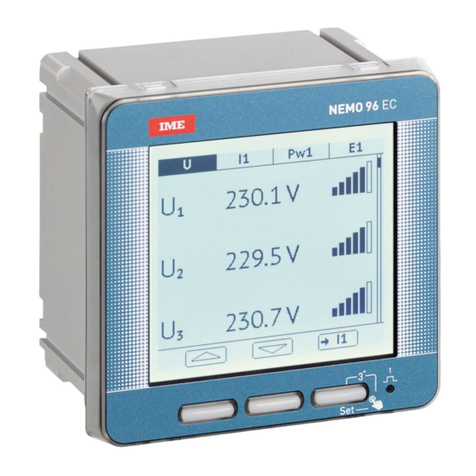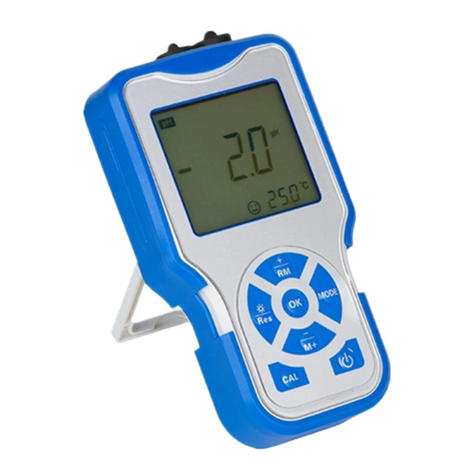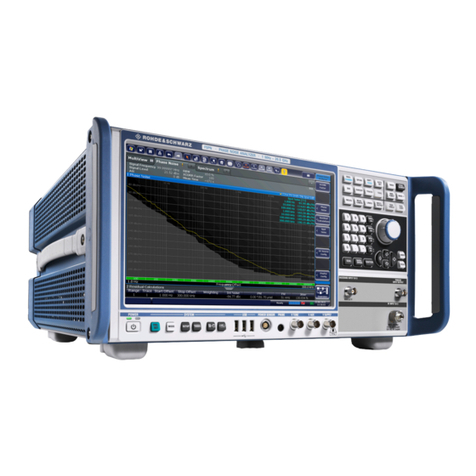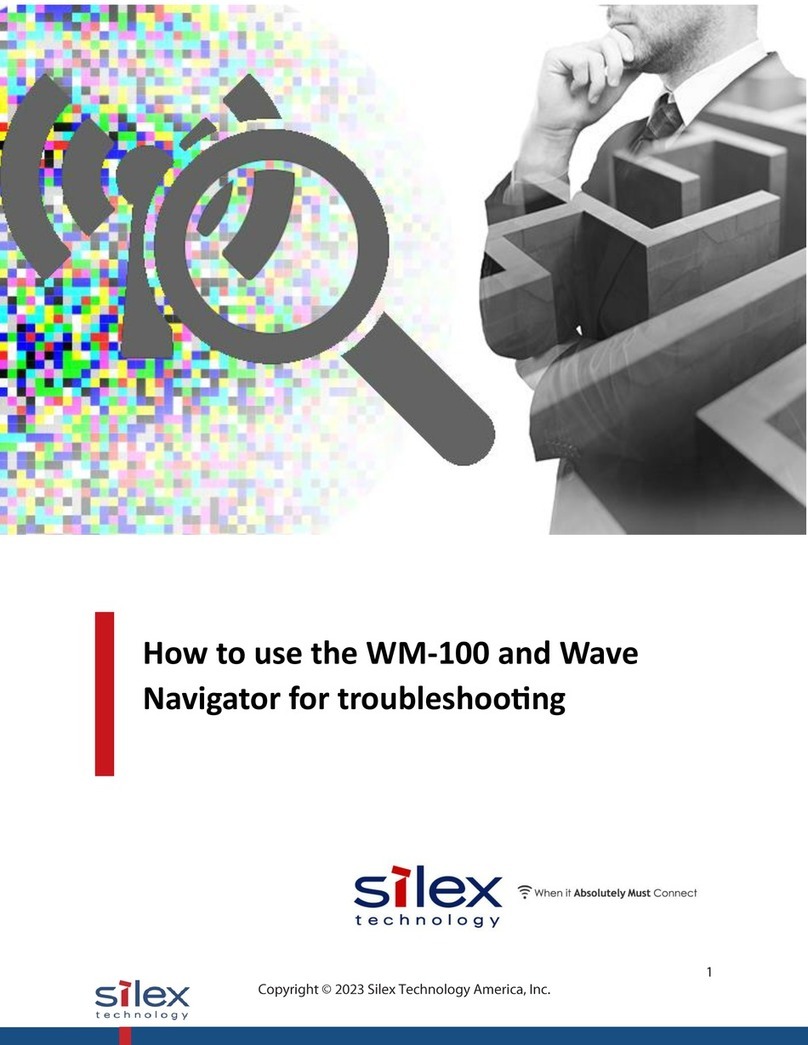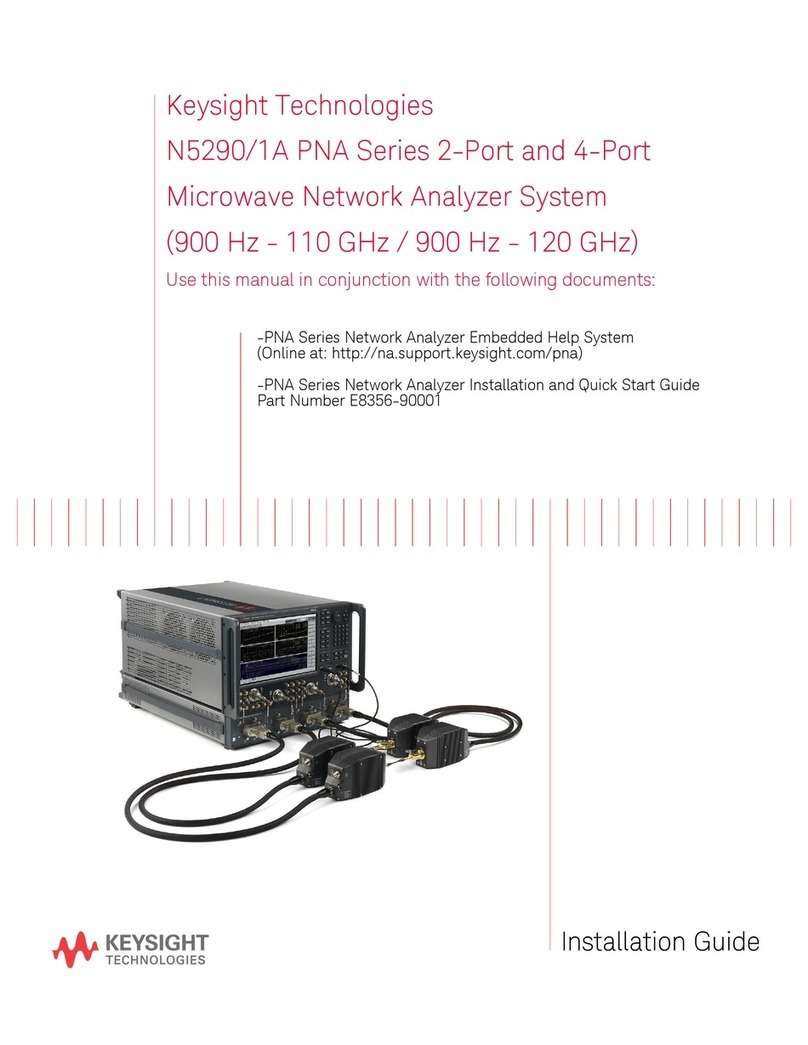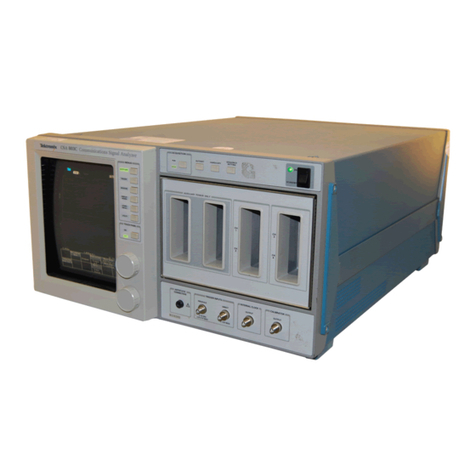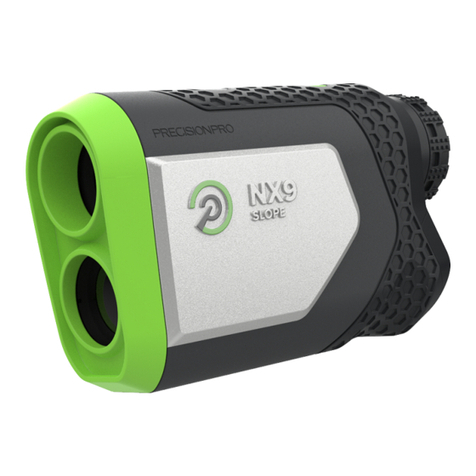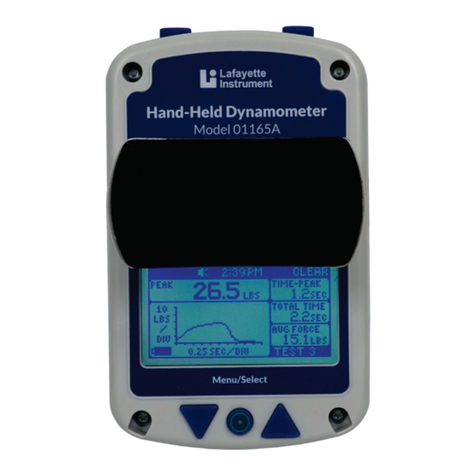First Stop Safety MemoryPAT-Blu User manual

MemoryPAT-Blu
Battery Powered
Portable Appliance Tester
with Display, Memory
& Bluetooth Interface
User Manual
Issue 1.2

CONTENTS
SAFETY 4
GETTINGSTARTED 5
INTRODUCTION 6
FEATURES 7
PLANNING THE TESTS 11
Determining theClassofconstruction 11
Typeofequipment 11
Type ofenvironment 12
Frequencyof visualinspectionandtesting 12
EquipmentRegister 12
FORMAL VISUAL INSPECTION 13
Cable 13
Appliance 13
Plugexternal 14
Pluginternal 14
Fuserating 15
OPERATION 16
TestingClassIequipment 16
ClassI metal 16
ClassI plastic 18
ClassIEarth Connection 18
TestingClassIIequipment 19
TestingIECleads 20
Testingmainsextensionleads 21
Testinglongextension leads 22
Testingsurgeprotectedappliances 24
Testing110Vappliances 25
Testing3-phaseappliances 25
Memory 26
Downloading toPC 27
BatteryCharging 27
SelfTest 28
SelfProtection 28
SPECIFICATION 29
APPENDIX I 32
SuggestedFrequencyof Inspection&TestingofEquipment
CARING FOR YOUR MEMORYPAT-BLU 34
LIFETIME WARRANTY (inside back cover)

FIRST STOP SAFETY 4
MemoryPAT-Blu Issue 1.2
SAFETY
Please read this manual carefully to make yourself familiar with the
capabilitiesandfunctionsoftheMemoryPAT-Blu beforeattempting touse
it.
1. This manual contains all the information necessary to carry out in-
service testing of all electrical appliances. If after reading this manual
you are still not confident about carrying out the tests then please
consider either attending one of our many courses held around the UK
or studying our Distance Learning Package on Portable Appliance
Testing. See our website www.firststopsafety.co.uk for details.
2. The unit is designed to be powered from a rechargeable 9V NiMH
battery. This is built into the unit and is not designed to be a user
replaceable item.
3. The IEC socket provided is for the testing of IEC leads. Take great
care not to plug an IEC lead into the mains and then into this
socket.Thiscouldinvalidateyourwarranty.However,ifthisshould
happen accidentally the unit is protected internally.
4. AUSBleadandmainsadapterissuppliedtochargethebatteries.There
is no mains power-on switch. To isolate the unit from the mains, either
switch off at the mains socket or disconnect the USB lead.
5. Therearenouserserviceablepartsinthisunit. Undernocircumstances
should the user attempt to open the unit. If opened, the warranty will be
invalidated.
6. The MemoryPAT-Blu is guaranteed for one year from the date of
purchase. Please keep your invoice as proof of purchase. Should the
unitrequireaservice,repairorcalibration,pleasereturnitto theaddress
at the back of this user manual. See inside back cover for our Lifetime
Warranty.
Whenreturningtheunit,pleasecontacttheSalesDepartmenttoreceive
aReturnsNumber. Theownerwillbeadvisedofanycostspriortowork
commencing.

FIRST STOP SAFETY 5
MemoryPAT-Blu Issue 1.2
GETTING STARTED
Before using the MemoryPAT-Blu please check that the following items have
been included inthe shipment:
MemoryPAT-Blu unit
USB lead and mains adaptor
Test lead
Short IEC lead
User manual
Equipment Register form
Test Record form
100 Tested, 5 Failed and 50 Fuse labels.
Check for any damage in transit. If there is any sign of damage, please report it
to your supplier and do not attempt to repair the unit.

FIRST STOP SAFETY 6
MemoryPAT-Blu Issue 1.2
INTRODUCTION
The Electricity at Work Regulations 1989 (EAWR) places certain requirements
on employers, designed to control risks that can arise from the use of electricity.
Inpractice,thismeansthatallelectricalappliancesatworkneedtobeinspected
and tested.
The MemoryPAT-Blu is a compact battery powered Portable Appliance Tester,
and can be used to test PCs, monitors, kettles, desk lights, drills, hairdryers etc.
If an appliance has a plug it can be tested on the MemoryPAT-Blu.
The clear controls and displays make this instrument very easy to use. The
instructions,labelsandsamplerecordssuppliedmakeitveryeasyforanyone to
undertake safety testing on all electrical appliances.
TheuserhasonlytodecidewhethertheequipmenttobetestedisbuilttoaClass
IorClassIIconstruction. Thesuppliedtestclipisconnectedandthe appropriate
button pressed.
All test results are saved in internal memory and can be accessed using the
Memory ◄and ► buttons. The results can also be downloaded to a PC using
our Download Utilitywhich is available free on our website.
Additionally the Bluetooth interface allows PAT test results to be transferred as
they are made to any Android device (e.g. tablet or mobile phone) running the
free PATRec application. PATRec allows PAT Test results to be annotated to
includeforexamplelocationandapplianceinformation.ThePATRecapplication
is availablefor download from the Google Play Store.
Before any PAT Testing is carried out, it is very important to inspect the
appliance.Manyfaults,e.g.awrongvaluefuseorawronglywiredplug,canonly
befoundbycarefulinspection.Thisusermanualsetsouthowthiscanbecarried
out.
Also included are master forms that can be used for managing PAT Testing in
the workplace. These can be copied as many times as required.

FIRST STOP SAFETY 7
MemoryPAT-Blu Issue 1.2
FEATURES
PAT TESTS
CLASS I TEST
When this button is pressed, the unit will test Earth Continuity and Insulation
ResistanceshowingtheresultsforeachtestandanoverallPASSorFAILonthe
LCD display.
CLASS II TEST
When this button is pressed, the unit will test Insulation Resistance showing the
result for the test and an overall PASS or FAIL on the LCD display.
POWER CORD
Whenthisbuttonispressed,theunitwill carryoutanEarthContinuity,Insulation
Resistance and a Wiring test showing the results for each test and an overall
PASS or FAIL on the LCD display.
POWER ON TEST
When testing appliances it is important to make sure that their power switches
are in the ON state. The MemoryPAT-Blu will carry out a Power ON Testbefore
proceeding with a Class 1 or a Class 2 test.
Ifa testisstartedand the userhasforgottentoswitchtheapplianceON, then as
soon as the appliance is switched on the test will continue. If it is not possible to
switch the appliance ON, then it is possible toskip this test.

FIRST STOP SAFETY 8
MemoryPAT-Blu Issue 1.2
LARGE LCD DISPLAY
The 6 line x 18 character LCD displays all user instructions and test results in a
clear unambiguous way. When a test is completed it shows the test settings, an
overall PASSor FAIL assessment and the results for the different tests.
A unique test number is assigned to each test. This is useful when recalling test
results from memory.
MEMORY
TheMemoryPAT-Blucanstorethecompletetestresultsfrom2000tests.These
can be recalled using the memory ◄ and ► buttons and the unique reference
number is used totie a particular set of results to a particular appliance.
The test results can also be downloaded via the USB port to a PC using our
Download Utility.
BLUETOOTH
Pressing the Bluetooth button will turn on the Bluetooth interface. When the
Bluetooth interface is on, the blue LED above the button will flash.
To turn off the Bluetooth interface, press and hold the Bluetooth button. When
the LED turns on constantly (after approximately 3 seconds), releasethe button
and the interface will be disabled.
Once turned on, the Bluetooth interface will remain active for a period of 1 hour.
After 50 minutes of operation, the LED will flash twice a second to indicate that
the interface will soon switch off.
Once the link is active, pressing the Bluetooth button again forapproximately ½
second will extend the link active time by a further 1 hour. The LED will flash
rapidly 5 times to indicate the 1 hour active period has been re-started.
BATTERY OPERATION
WiththeBluetoothinterfaceactive,theMemoryPAT-Blucancarryoutmorethan
600 tests from a fully charged battery. Turning the Bluetooth off when the tester
is not in use will increase battery life.

FIRST STOP SAFETY 9
MemoryPAT-Blu Issue 1.2
TEST SETTINGS
LONG LEAD
Thisisusedwhenappliancesandpowercordsexceeding1minlengtharebeing
tested. With this function, the MemoryPAT-Blu can test appliances and power
cords up to 50m in length.
INSULATION RESISTANCE TEST VOLTAGE
TheMemoryPAT-Bluusesa500VtestvoltagefortheInsulationResistancetest.
The user can select to use a 250V test voltage for this when testing surge
protected appliances.
SELF TEST
The MemoryPAT-Blu monitors the test voltages and currents during a test and
reports any problems to the user.
ACCESSORIES
The following accessories are supplied with the MemoryPAT-Blu:
CHARGER
Wall charger and USB lead for charging the MemoryPAT-Blu’s built in batteries
or to operate the tester from the mains. The USB lead can also be used to
connect the MemoryPAT-Blu to a USB port of a PC to download test results.
SHORT IEC LEAD
This allows mains extension leads to be connected to the IEC socket of the
MemoryPAT-Blu for testing.
SAMPLE FORMS
An “Equipment Register” and a “Equipment Test Record” form is included.
These can be copied and used as often as required. The user manual refers to
this under the relevant sections.

FIRST STOP SAFETY 10
MemoryPAT-Blu Issue 1.2
LABELS
100 ‘tested’ labels, 5 ‘failed’ labels and 50 ‘fuse’labels are supplied with each
unit. Additional labels are available to purchase separately.

FIRST STOP SAFETY 11
MemoryPAT-Blu Issue 1.2
PLANNING THE TESTS
Before commencing testing, it is advisable to take a few minutes to plan. First of
all work out whether the equipment is Class I or II. Then decide the type of
equipment and the environment it is going to be used in. This will help to
determine how often the inspection and testing has to be carried out. The
Equipment Register then needs to be prepared. Once this is completed, one is
readyto commence Inspection and Testing.
CLASS OF CONSTRUCTION
All equipment that uses mains electricity are either Class I or Class II. Knowing
the Class of the equipment is important when planning the testing.
If the symbol is present on the rating plate the equipment is Class II. If the
symbol is missing, assume that the equipment is Class I. Mains extension
leads and IEC leads are treated as Class1 appliances.
TYPE OF EQUIPMENT
For the purpose of planning, electrical equipment is categorised into 5 types as
shown below. In general, the easier it is to move an appliance, the higher the
chances of damage to it and the more frequently it has to be tested.
Stationary equipment: Refrigerators and washing machines are examples.
Information Technology equipment: This includes computers, VDUs, data
terminals, telephones, printers, fax machines and photocopiers.
Movable (transportable) equipment: Items that are moved occasionally, like
fans and fires would fitin this category.
Portable appliance: These are appliances such as vacuum cleaners, toasters
and kettles which can easily be moved whilst connected to the mains.
Handheld appliance: This is equipment intended to be held in the hand during
normal use like a hair dryer or drill.

FIRST STOP SAFETY 12
MemoryPAT-Blu Issue 1.2
ENVIRONMENT
The location of equipment will have a bearing on the frequency of testing. For
exampleanitemthatisusedinalow-riskenvironmentsuchasanofficewillhave
a much lower risk of damage than an item used on a construction site. Please
see below for various examples.
Low risk: Offices,shops, hotels and nursing homes
Medium risk:Schools
High risk: Factories, commercial kitchens and equipment used by the public.
Very high risk: Construction sites
FREQUENCY OF VISUAL INSPECTION AND TESTING
It is not essential to carry out inspecting and testing every year. Table 1 below
gives some intervals that are recommended in low risk environments, such as
offices, shops, hotels, and nursing homes. (Timescales for other environments
can be found in Appendix I)
Class I
Class II
Type
Inspection
Insp. & test
Inspection
Insp. & test
Stationary
24 months
5 years
24 months
none
IT
24 months
5 years
24 months
none
Movable
12 months
24 months
24 months
none
Portable
12 months
24 months
24 months
none
Hand-held
12 months
24 months
12 months
none
Table 1: Frequency of inspection and testing in low risk environments
EQUIPMENT REGISTER
This form is used to list all the electrical equipment in the business. Information,
such as Class I or II, type of equipment and frequency of test is recorded. A
blankformissupplied,andthiscanbephotocopiedandusedifadditionalsheets
are required. As new equipment is purchased, this needs to be added to the
register.

FIRST STOP SAFETY 13
MemoryPAT-Blu Issue 1.2
FORMAL VISUAL INSPECTION
Once the above preparation work has been carried out, the visual inspection is
quite straightforward. It is important to prepare a Test Record for each piece of
equipment. A sample form is provided that can be photocopied and used as
required. This form will be used to record the history of visual inspection and
testing.
Formal Visual Inspectionis a very important part of making sure that appliances
are safe to use. In fact, the majority of faults can only be found by a good visual
inspection of the appliance. The following is a list of faults to look for:
Cable
Damage to power cable sheath. Any non-standard joints.
Appliance
Signs that the equipment has been subject to conditions for which it is not
suitable, e.g. wet or excessively rusty.
Cable not being gripped. Damage to external casing.

FIRST STOP SAFETY 14
MemoryPAT-Blu Issue 1.2
Plug external
Cable not being gripped. Damage to mains plug.
Plug internal
In addition to the above, the plug cover (if it is not moulded) needs to be taken
off and check that the cable terminations are correct.
Examples of faults:
Fuse not being used. Bare wires visible.
EARTH WIRE: Green/Yellow
LIVE WIRE: Brown
NEUTRAL WIRE: Blue

FIRST STOP SAFETY 15
MemoryPAT-Blu Issue 1.2
Fuse rating
Check fuse rating. If possible, refer to manufacturer's user guide. Otherwise
follow guidelines below:
3A or 5A fuse fitted: NO action.
13A fuse fitted: Then check power rating.
If power is less than 700 W then fit 3 Amp Fuse.
If power is more than 700 W then NO action.
Examples:
40W rating, requires 3A fuse. 1200W rating, requires 13A fuse.
If the equipment fails on any of the above points, then it must be taken out of
service, a "FAILED" label applied and not used again until it has been properly
repaired and tested.
Under no circumstances must one proceed with the testing stage, if a
failure is found during the Formal Visual Inspection stage.

FIRST STOP SAFETY 16
MemoryPAT-Blu Issue 1.2
OPERATION
TESTING CLASS I EQUIPMENT
Class I Metal
TheequipmenttobetestedispluggedintothemainssocketontheMemoryPAT-
Blu. The test clip is connected to any exposed metal on the equipment. For
example on a kettle this will be the element. On a PC it will be the metal case.
Press the Class I button. The MemoryPAT-Blu will first check that the power
switch on the item is in the ON position.
If it is then it will displaythe screen below and commence the testing.
If the user has forgotten to switch the appliance ON then the MemoryPAT-Blu
will display the following reminder message.

FIRST STOP SAFETY 17
MemoryPAT-Blu Issue 1.2
As soonas the appliance is switched ON the MemoryPAT-Blu will continue with
the test. Note that not all appliances have an ON switch and it may not be
possibletoswitchsomeappliancesON.Inthiscasetheusercanskipthischeck
and carry on with the main testing by pressing the Class I button again. If the
user does neither then the unit should abort this test and power down.
The test will now run and the display will show the test results for the Insulation
Resistance and Earth Continuity tests as well as an overall Pass or Fail. The
image below shows the result of a test that shows a pass. The test number on
the last line (188 in this example) increments automatically for each test. The
user should make a note of this unique number in the test records against the
appliance being tested.
Here is a result that results in a fail due to the Earth Continuity being too high.

FIRST STOP SAFETY 18
MemoryPAT-Blu Issue 1.2
Once the testing is complete, record the results in the Test Record making sure
to include the unique test number. The results are also saved in the memory of
the PAT tester for later retrieval.
Note 1: When the tests are performed, it is important to flex the power lead to
make sure that any loose connections are stressed and are picked up by the
test. The Earth Continuity test is repeated automatically to look for this.
Note 2: On some appliances, paint, rust or scale will prevent a good earth. It is
important to persevere and try and get a good earth connection when carrying
out this test.
Class I Plastic
Some Class I appliances (eg electric fans, vacuum cleaners) maynot have any
exposedmetaltoconnect the testclip to. If thisisthecase, then usetheClass2
test.
Class I Earth Connection
Finding a good earthon Class I appliances comes with experience. To help you
identifywheretoconnectthetestlead,wehaveprovidedafewexamplesbelow.
PC; Case or connector Television; Aerial

FIRST STOP SAFETY 19
MemoryPAT-Blu Issue 1.2
Hot melt gun; nozzle Iron; Behind plate
TESTING CLASS II EQUIPMENT
The equipment to be tested is plugged into the mains socket on MemoryPAT-
Blu.Thetestclipisconnectedtoanyexposedmetalontheequipment,ifpresent.
Press the Class II button. The MemoryPAT-Blu will first check that the power
switch on the item is in the ON position. If it is then the testing will begin. If the
user has forgotten to switch the appliance ON then the MemoryPAT-Blu will
display the following reminder message.

FIRST STOP SAFETY 20
MemoryPAT-Blu Issue 1.2
As soonas the appliance is switched ON the MemoryPAT-Blu will continue with
the test. Note that not all appliances have an ON switch and it may not be
possibletoswitchsomeappliancesON.Inthiscasetheusercanskipthischeck
and carry on with the main testing by pressing the Class II button again. If the
user does neither then the unit should abort this test and power down.
The test will now run and the display will show the test results for the Insulation
Resistance as well as an overall Pass or Fail.
Once the testing is complete, record the results and the unique test number in
the Test Record.
Note: On Class II appliances, such as a hair dryer where there is no exposed
metal, the test lead can be left unconnected.
TESTING IEC LEADS
When testing IT equipment with detachable IEC leads, it is important to test
these as individual items. Plug both ends of the IEC lead into the MemoryPAT-
Blu. One end into the mains socket and the other end into the IEC socket.

FIRST STOP SAFETY 21
MemoryPAT-Blu Issue 1.2
For IEC leads up to 1 metre in length, press the Power cord button. The
MemoryPAT-Blu run through the tests andthe resultsfor InsulationResistance,
Earth Continuity, and Wiring will be displayed as well an overall Pass or Fail as
shown below.
Once the testing is complete, it is important to label the leads.
TESTING MAINS EXTENSION LEADS
This short IEC lead allows the testing of mains extension leads. Plug the
extension lead into the MemoryPAT-Blu. Plug the adaptor into one of the
sockets of the extension lead and also into the IEC testing socket on the
MemoryPAT-Blu.
Other manuals for MemoryPAT-Blu
1
Table of contents
Other First Stop Safety Measuring Instrument manuals

